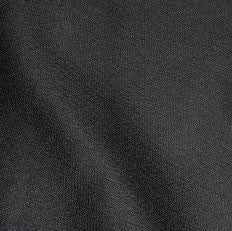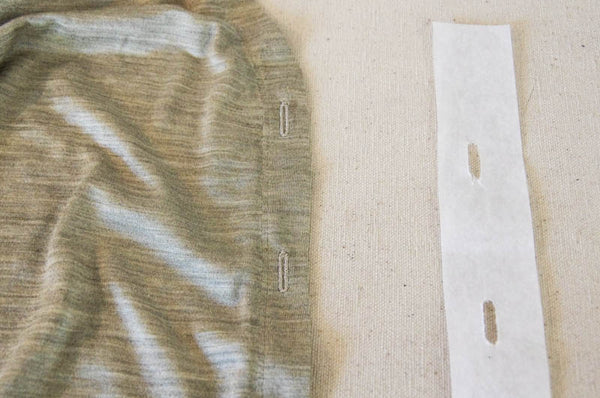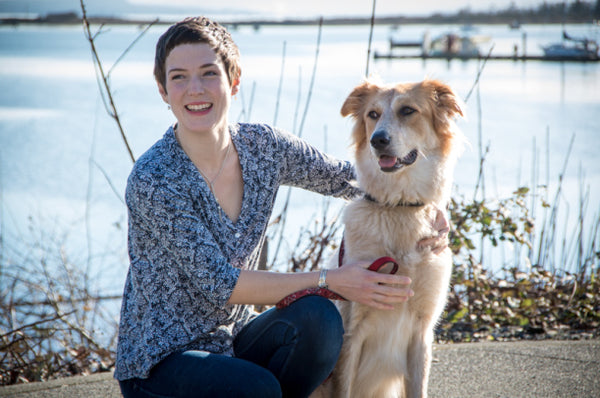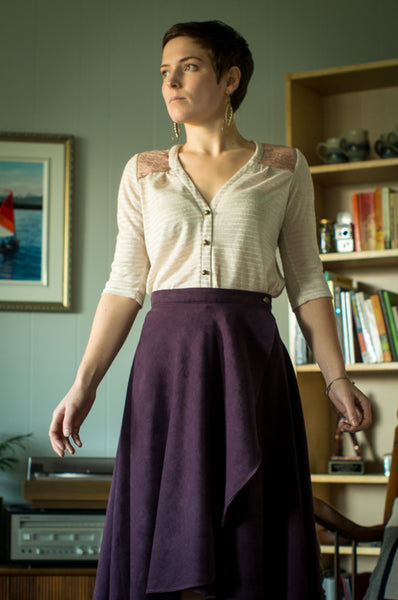Welcome to the first day of the Camas Blouse sew-along! We are talking about materials today so that you are armed with knowledge when you head out to find your fabric.

Photo Credits (Left to Right, Top to Bottom): 1 2 3 4 5 6
When I originally envisioned the Camas Blouse (as part of the fashion collection I designed during the Fashion Design program I took several years ago) I imagined a weightless and elegant blouse that hinted at the playsuits, practical blouse and pant outfits, and rayon dresses that many women wore throughout WWII. These outfits were comfortable, simple, affordable and, to me, look stylish in a very effortless way. I designed the Camas for knits as a modern interpretation of this wartime emphasis on practical comfort.

My favorite fabrics for the Camas Blouse have the following categories:
1. A Wonderfully Soft Drape
This is the most important quality if you want the gathers above the bust and just below the back yoke to fall nicely over your body. Drape is especially important if you are choosing a lightweight fabric – you want the hem to fall smoothly rather than stick out in an awkward manner!
Test the drape of a fabric by unrolling about a metre from the bolt. Hold it up to your body and see how it falls against curves like your shoulder or bust. Does it naturally want to conform to the shape of your body or does it retain it’s own shape? You want it to conform to you pleasingly. Take special note of this characteristic if you are planning to sew the Camas in a woven. Many knits contain lovely drape but many blouse-weight wovens do not!
2. Opacity
The Camas consists of a single layer of fabric over the bust so make sure that your fabric is opaque enough to block a full view of your bra (unless this is the fashion statement you are hoping to make!). I often fall in love with beautiful tissue weight knits only to unfurl them from the rest of the fabric bolt and realize I would be on full display if I wore them as a single layer.
3. Snag Resistance
This category is an important one for me but it might not be necessary for you. I wear the Camas like I would wear a basic t-shirt. I wear it hiking, gardening, while petting my cat (the ultimate snag-creator) and sometimes even while playing squash. The loose fit makes it just as comfortable as a t-shirt but it looks a bit more interesting. My favorite choices for snag-free and strong knits are jerseys containing bamboo or linen.
Why isn’t stretch in the top 3?
You might have noticed that I haven’t included stretch as one of my top three categories. I recommend choosing a fabric with at least a very small amount of stretch because the sleeves have been drafted fairly slim since they were originally intended to be sewn from a knit fabric. Using a fabric with stretch will increase the mobility you have. The main body of the Camas does not need a stretchy fabric because the yokes (and thus the shoulder width) are drafted for woven contrast fabrics and do not contain negative ease. All that being said, there are some very easy adjustments that you can make so that you can sew the Camas from a fabric with no stretch at all. We’ll be going over this in more detail in a few days.
Now, to get a bit more specific, here are nine of my top Camas Blouse knit choices!

Descriptions below correspond to the photos above, left to right, top to bottom. Sorry that the top three photos are blurry! I really wanted to include Fancy Tiger fabrics despite the small pictures available on their website because Matt and I visited the Denver shop in person a couple of years ago and were in awe of the high quality fabrics they had curated!
Stone Blue Hemp/Cotton Knit from Fancy Tiger: A little bit thick and nicely textured for a casual ‘t-shirt’ style Camas Blouse.
School Plaid Blue Cotton/Spandex Jersey from Fancy Tiger: This is actually one of Girl Charlee’s signature knits and it is knit in the USA. It has been pre-shrunk which is handy! A lengthened Camas in this fabric would make a very cute nightgown or tunic.
Line Drawings Bluing Cotton/Spandex Jersey from Fancy Tiger: This is an Art Gallery fabric which, from my experience petting these fabrics, are very soft and a great weight for a knit shirt.
Vine Cotton Interlock from Simplifi Fabric: One of my favorite Canadian shops. :D This interlock fabric is less drapey than a jersey would be but it is easier to sew because it is more stable! Plus, isn’t the print gorgeous? This would be a great choice for someone new to sewing with knits.
Retro Floral Viscose Lycra Jersey from Guthri & Ghani: A British fabric shop! I’ve chosen this print because it reminds me of the 1940’s rayon dresses that were my inspiration for the Camas Blouse. While I haven’t felt this knit in person, I imagine it is slinky and drapey due to it’s viscose content. It is likely quite stable and strong because it contains Lycra. This would make a hard wearing yet dressy looking Camas Blouse.
Sunrise Organic Cotton Jersey from Organic Cotton Plus: A completely organic online fabric shop based in the US. This jersey is 100% cotton (no spandex content) so it will be quite stable, similar to a men’s t-shirt fabric. It would make a great ‘every-day’ Camas Blouse that is light weight and easy to wear. It would take the place of a t-shirt in your wardrobe.
Forest Cotton Bamboo Jersey from Thread Theory: I hope you don’t mind that I’m including a little plug for the fabric that we carry in our shop! I can’t avoid doing so because the bamboo jersey that we have in the shop is an ideal candidate for the Camas Blouse and is one of the most rugged yet beautiful fabrics I have ever come across (hence why we stock it in our shop!). The cotton makes this fabric sturdy, the bamboo makes it slinky and hard wearing. The high spandex content gives a lovely stretch and a weighty drape to the knit. It is completely opaque in all of it’s colorways. It doesn’t shrink in the wash and has held up to my terrible laundry practices for years (high heat drying every week). I’ll be making a Camas using this fabric for the sew-along so you can see exactly how it looks sewn up.
Heathered Almond Cotton Bamboo Jersey from Thread Theory: Same as above! This light colourway is very elegant and just as opaque as the darker colors. I love the heathered texture.
Olive Cotton Bamboo Jersey from Thread Theory: This is a nice solid (not heathered) in a color that I view as a neutral since olive is my favorite color and I wear it with everything.
Shall we move on to the wovens?
If you are planning to sew the Camas in a woven, here are my top three choices. We will be talking about ways to adjust the pattern to better suit knits in a future post so refrain from cutting into your woven fabric just yet :).

Opal Double Gauze from Organic Cotton Plus: Gauze is loosely woven which gives it quite a nice drape (not super slinky but not stiff like a shirting cotton). Double Gauze features two layers so it is more likely to be opaque than it’s single layered gauze counterpart.
Ivory Tencel Twill from Blackbird Fabrics: Another Canadian fabric shop! Tencel is one of my favorite choices for drapey garments. It is stronger than rayon and usually has a beautiful sheen. This ivory tencel is no exception! It would make an extremely luxurious and dressy Camas Blouse with an interesting texture – can you imagine it with pearl and gold buttons?
Black and White Ikat Viscose from Guthri & Ghani: Once we go over a couple of alterations you might like to make when sewing the Camas with a woven, it will be a perfect candidate for all of those slinky viscose novelty prints that you can’t resist at the fabric shop! Any small to medium print would be lovely – you could even use a complimentary print for the yoke. I imagine this practice of pairing prints could look either very French chic or very romantically bohemian depending on the colorway.
Now that I’ve given you my two cents about fabric choices, I want you to keep in mind that you are very free to experiment! I have seen many a successful Camas sewn inthicker knits such as Ponte di Roma or in crisp cottons to create a more structured look than I initially envisioned. In fact, I’ve done some experimenting in the past myself by making my mom a Camas out of a crisp stretch cotton with very little drape.

As you can see, the blouse looks quite different than my usual Camas projects but it is nice too! My only critiques of this experiment are that the hem is weightless so the blouse likes to ride up a little so that it billows and buckles if it is not pulled down. Also, the fabric wrinkles easily because it is not fitted to the body with this style of blouse.
Now that we’ve talked fabric, let’s move on to discussing notions for this project.
Knit Interfacing:

Knit interfacing is usually light weight and contains stretch in at least one direction. In the Camas Blouse instructions I state that you should interface all of your placket pieces. The interfacing helps to stabilize these narrow little pieces so that they are easier to sew (they won’t roll up quite so much) and so that they are stable enough to handle all of the needle piercing involved in sewing buttonholes. Wouldn’t it be terrible if your lightweight knit fabric developed a hole when you were sewing the very last buttonhole on to your blouse?!
If you plan to avoid buttonholes by using snaps or by simply sewing on decorative but non-functional buttons (more on this momentarily), you can skip the interfacing to create a more fluid placket that drapes against your body in the same way that the rest of the blouse does. You can also skip the interfacing but still add the buttonholes by using a temporary stabilizer that doesn’t remain within the garment once you are done sewing it. Here is a tutorial that I created about this sort of stabilization!
Closures:

The choices are vast when it comes to adding closures to the Camas Blouse! Here are a few options that I’ve tried out:
Buttons with Buttonholes: These are functional and they accentuate the fact that the comfy knit Camas is, indeed, a blouse rather than a t-shirt. This might be a good option if you are hoping to get away with wearing your ‘secret pajamas’ to work despite the dress code! Or maybe you plan to breast-feed in this blouse?

Snaps: Pearl snaps or halo snaps both look lovely (and a bit more casual) on the Camas. Plus, they are super simple to install! I would recommend avoiding these if you are using a mid-weight to thick knit for your blouse. It can be difficult to work the snap prongs all the way through the knit placket if the knit is a bit spongey.

Decorative Buttons: The Camas Blouse can easily be put on and taken off over the head due to the loose fit created by the gathers so there really isn’t a need for any sort of closure! Just sew on decorative buttons through all layers of both plackets (this is what I did for the blouse photographed below).

No hardware at all: Make your Camas into an open front cardigan by skipping buttons or snaps entirely – I will be doing this with one of my sew-along Camas Blouses (and I will also be adding length to the sleeves to create a cozy sweater).
On Wednesday we will be discussing sizing and some fit adjustments. In the meantime, please feel free to email with any fabric and notion questions you might have! If you would like my advice on a particular fabric choice, send a link or photo to info@threadtheory.ca










